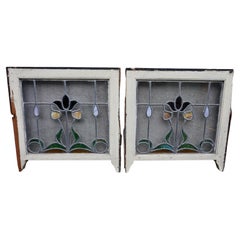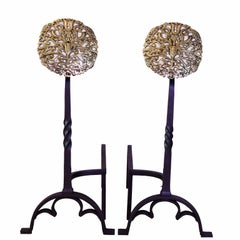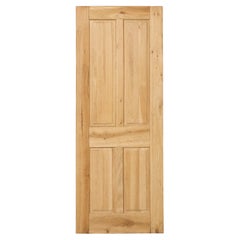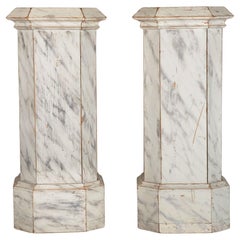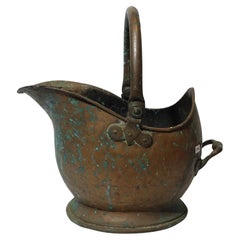British Building and Garden Elements
Early 1900s Art Nouveau Antique British Building and Garden Elements
Stained Glass
19th Century Victorian Antique British Building and Garden Elements
Brass, Wrought Iron
21st Century and Contemporary Victorian British Building and Garden Elements
Oak
20th Century Neoclassical British Building and Garden Elements
Pine, Paint
1910s Arts and Crafts Vintage British Building and Garden Elements
Brass, Steel
19th Century Antique British Building and Garden Elements
Brass, Copper
1920s Rococo Vintage British Building and Garden Elements
Iron
Early 20th Century Art Deco British Building and Garden Elements
Ceramic
19th Century Antique British Building and Garden Elements
Copper
1880s Victorian Antique British Building and Garden Elements
Ceramic, Faience, Majolica
Early 20th Century Neoclassical British Building and Garden Elements
Pine
1880s Victorian Antique British Building and Garden Elements
Carrara Marble
Early 19th Century Regency Antique British Building and Garden Elements
Marble
19th Century Neoclassical Revival Antique British Building and Garden Elements
Concrete
18th Century Rococo Antique British Building and Garden Elements
Bronze
Mid-19th Century Gothic Revival Antique British Building and Garden Elements
Limestone
Late 19th Century Antique British Building and Garden Elements
Iron
Late 19th Century Late Victorian Antique British Building and Garden Elements
Oak
20th Century British Building and Garden Elements
Cast Stone
Early 1900s Edwardian Antique British Building and Garden Elements
Iron
20th Century British Building and Garden Elements
Walnut
Late 19th Century Victorian Antique British Building and Garden Elements
Ceramic, Porcelain
Late 19th Century Victorian Antique British Building and Garden Elements
Glass, Stained Glass, Pine
1860s Victorian Antique British Building and Garden Elements
Statuary Marble
1880s Late Victorian Antique British Building and Garden Elements
Oak
1910s Arts and Crafts Vintage British Building and Garden Elements
Stained Glass
Early 20th Century Edwardian British Building and Garden Elements
Tapestry, Walnut
20th Century British Building and Garden Elements
Mahogany, Oak
19th Century Antique British Building and Garden Elements
20th Century British Building and Garden Elements
Cast Stone
Late 19th Century Antique British Building and Garden Elements
Metal, Iron
19th Century Victorian Antique British Building and Garden Elements
Wood, Pine
19th Century Arts and Crafts Antique British Building and Garden Elements
Stained Glass, Wood, Art Glass
19th Century Victorian Antique British Building and Garden Elements
Brass
20th Century British Building and Garden Elements
Cast Stone
1750s Georgian Antique British Building and Garden Elements
Copper, Iron
21st Century and Contemporary Art Deco British Building and Garden Elements
Limestone
Late 19th Century Victorian Antique British Building and Garden Elements
Brass
Late 19th Century Victorian Antique British Building and Garden Elements
Iron, Wrought Iron, Metal
Mid-18th Century Medieval Antique British Building and Garden Elements
Metal, Iron, Wrought Iron
Early 1900s Antique British Building and Garden Elements
Steel
19th Century Victorian Antique British Building and Garden Elements
Copper, Iron
Mid-19th Century Gothic Antique British Building and Garden Elements
Stone
Early 20th Century Victorian British Building and Garden Elements
Glass, Stained Glass, Wood, Pine
Mid-19th Century Victorian Antique British Building and Garden Elements
Iron
1880s Victorian Antique British Building and Garden Elements
Ceramic, Majolica
19th Century Victorian Antique British Building and Garden Elements
Iron, Wrought Iron, Copper
19th Century Victorian Antique British Building and Garden Elements
Porcelain
Early 20th Century Industrial British Building and Garden Elements
Metal
Early 19th Century Georgian Antique British Building and Garden Elements
Metal, Iron, Wrought Iron
1880s Aesthetic Movement Antique British Building and Garden Elements
Wrought Iron
Late 19th Century Antique British Building and Garden Elements
Brass
Late 19th Century Antique British Building and Garden Elements
Metal
21st Century and Contemporary Modern British Building and Garden Elements
Stainless Steel
Mid-19th Century Neoclassical Antique British Building and Garden Elements
Pine
Mid-19th Century Neoclassical Antique British Building and Garden Elements
Brass, Wrought Iron
1830s George IV Antique British Building and Garden Elements
Brass, Wrought Iron
1840s Early Victorian Antique British Building and Garden Elements
Iron
1920s Late Victorian Vintage British Building and Garden Elements
Brass
Late 19th Century Victorian Antique British Building and Garden Elements
Iron, Wrought Iron
Read More
39 Incredible Swimming Pools
It's hard to resist the allure of a beautiful pool. So, go ahead and daydream about whiling away your summer in paradise.
This Lavish 18th-Century Chimneypiece Comes from a Historic Scottish Estate
The exceptionally crafted mantel was saved despite the home’s regrettable demise.
A Pair of Monumental Stone Tigers Protect and Guide Wandering Souls
The Qing dynasty beasts honored the dead and warned off malicious spirits.
Andrés Monnier’s Stone Tub Makes Bathing a Rite of Renewal
The dramatic piece transforms a daily scrub into an act of communion with the elements.
Meet the Siblings behind the Exquisite Outdoor Furniture of McKinnon and Harris
Anne and Will Massie apply the lessons of the past to create alfresco pieces as timeless as the traditions that inspire them.
35 Wondrous Outdoor Dining Spaces
Eating meals alfresco is one of the great pleasures of warm weather, and a beautifully appointed space only heightens the experience. Get inspired by these delectable dining areas as you think about creating your own outdoor oasis.
In These Chic Homes, Indoors and Outdoors Freely Mingle
Through potted plants, garden furniture, nature-inspired art and architectural apertures, designers are bringing the outside in.
24 Perfect Patios with Fire Pits and Fireplaces
In these stylish spaces, the outdoor season extends year round.
